Wednesday, 4 June witnessed the arrival of three United States Air Force Boeing B-52H Stratofortresses at RAF Fairford, Gloucestershire. Up until their departure for home on 20 June, the aircraft had been flying training missions alongside other US military and Allied forces within its European Command area of operations. Karl Drage joined the RAF Mildenhall-based 100th Air Refueling Wing to witness first-hand how some of that integration played out and what it achieved.

© John Higgins – www.globalaviationresource.com
Despite it being more than 62 years since the type’s first flight, the B-52 remains an integral part of the United States Air Force’s long-range, strategic bombing plans and will continue to do so until the 2040s. Its longevity is partly due to a number of updates that have been incorporated over its lifespan to date – and with others in the pipeline – but also, perhaps more significantly, due to its comparatively low operating costs compared to other types, whilst performing a variety of missions admirably at high-subsonic speeds.

© John Higgins – www.globalaviationresource.com
With two aircraft drawn from the 2nd Bomb Wing, based at Barksdale Air Force Base, LA, and a third from the 5th Bomb Wing at Minot Air Force Base, ND, at least one B-52 was operational on an almost daily basis on weekdays from 9 June. Despite pre-deployment patches clearly stating the B-52s’ presence as being part of the BALTOPS series of exercises, Air Force officials were keen to make it clear during their stay that this was not the case. As well as honing skills and improving familiarity with the UK, crews have also been able to provide invaluable B-52 exposure to a UK-based USAFE squadron, namely the 100th ARW.

© Karl Drage – www.globalaviationresource.com
Flying the Boeing KC-135R Stratotanker, the 100th ARW, as the name suggests, is responsible for keeping other USAF and Allied aircraft airborne for longer by offloading some of its fuel to them.
I, along with nine others, joined the crew of KC-135R 59-1492, callsign QID70 (pronounced “Quid Seven Zero”), on 17 June for a mission with two of the three B-52s, callsigns DOOM11 and DOOM12.

© Karl Drage – www.globalaviationresource.com
The flight saw us rendezvous with our receivers – which had already been airborne, by design, for around three and a quarter hours by the time we launched – in the vicinity of RAF Marham, Norfolk, at 27,000ft (FL270). Despite good weather on the ground at RAF Mildenhall, there was quite a lot of haze present around our RV point. Even with the poor visibility, it wasn’t long before one of the B-52s was spotted off the starboard wing, albeit at considerable distance. After holding position for a short time, the aircraft descended a few thousand feet before passing underneath us and dropping back into a position behind us.

© Karl Drage – www.globalaviationresource.com
With space for only one person on either side (and ten people wanting to capture footage on board) of the boom operator – the person responsible for ‘flying’ the probe through which the fuel is transferred into the receiving aircraft’s receptacle – it was not always easy to keep track of what was going on, but whilst one of the B-52s was in ‘contact’ (ie the boom was plugged into the receiver), the other aircraft was always holding position off one of the wings – starboard side before refuelling and port side after. I say ‘before refuelling’, but, whilst the aircraft were in contact, no fuel was actually transferred on this occasion; it simply provided both the B-52 crews and the boom operator with the chance to practise their procedures.
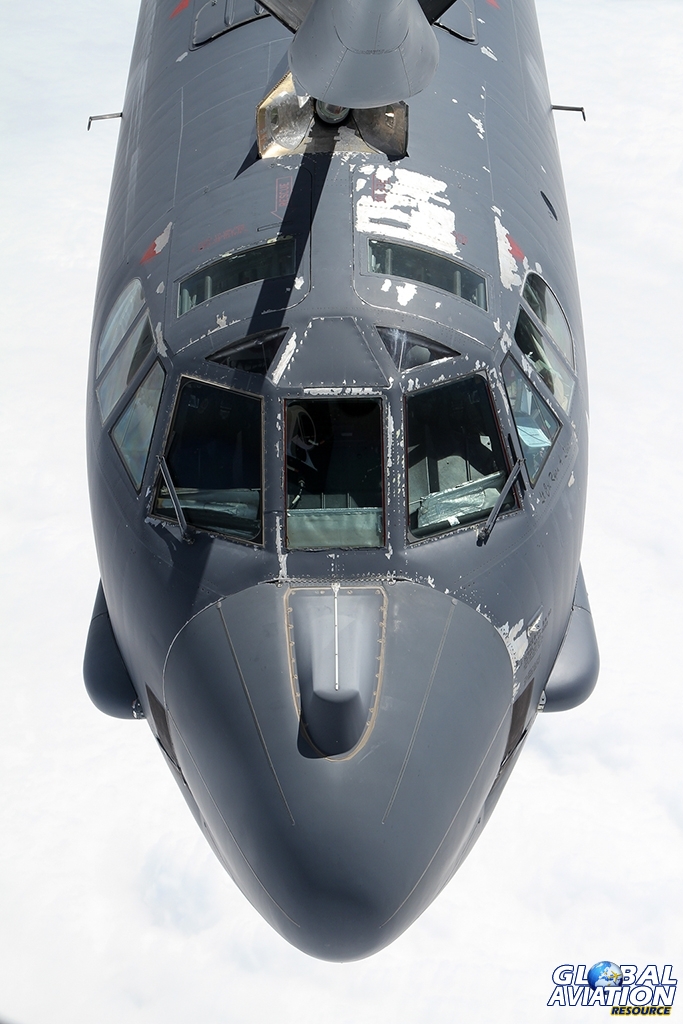
© Karl Drage – www.globalaviationresource.com
We were on refuelling track “Refueller West”, running from our RV point up over RAF Leeming and on to RAF Leuchars. The weather and visibility was improving all the time, so it came as a bitter disappointment when DOOM12 was forced to abort air-to-air refuelling early having developed a technical issue.
With the B-52s having left us, we continued north a little, even passing over some still-snow-covered peaks, before turning left and starting our journey back towards RAF Mildenhall’s Runway 29.

© Karl Drage – www.globalaviationresource.com
Once back on the ground, I asked QID70’s boom operator, TSgt. Augie Marshall, who was deriving the greatest benefit from this flight, the KC-135 crew or those in the B-52s:
“I would say that would be us. The Buffs, they get this kind of training a lot back home, Stateside; for us, being the one tanker squadron responsible for all of Europe and Africa, we don’t see them that often.
“We have to stay current in contacts, whether that’s day or night. In terms of types, a heavy receiver is a heavy receiver and a fighter is a fighter. We have to maintain currencies for each, but not for each specific aircraft type.”
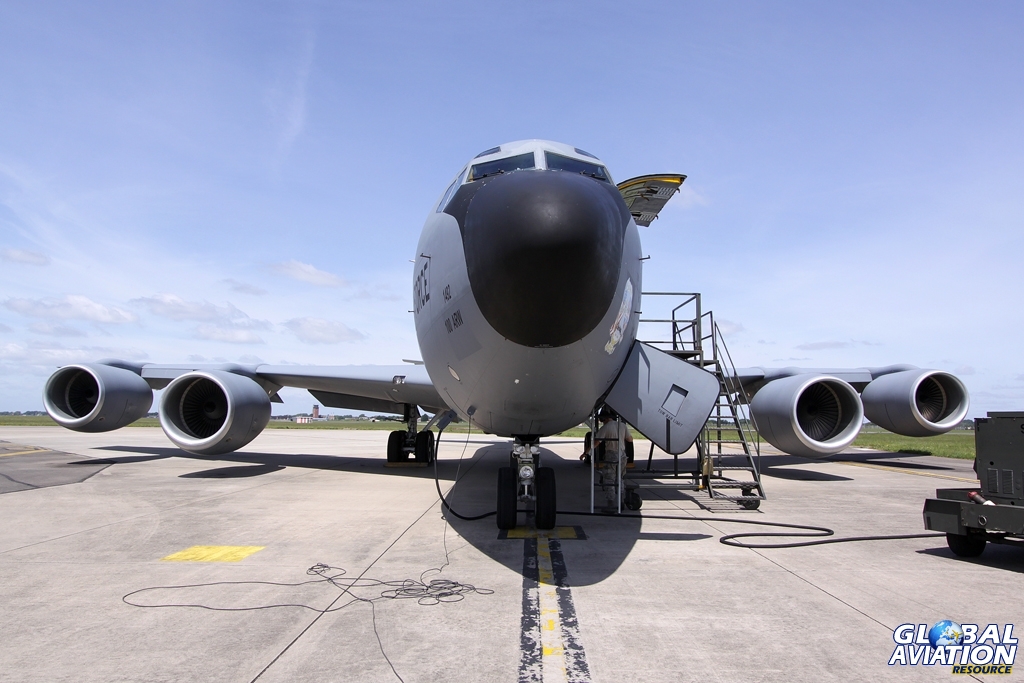
© Karl Drage – www.globalaviationresource.com
Capt. Jon Bourke was QID70’s commander and explained the benefits of getting to work with the B-52s:
“We get good training with any receiver, but with the B-52s, the boomers don’t get a lot of exposure to them, so it’s always good for them to see what we’ve got in our arsenal in the Air Force. In terms of specifics for the flight deck, there’s not a whole lot of difference between a B-52 or a C-17 or a C-5, I guess. Having said that, that was actually the first time I’ve ever refuelled a B-52. Usually we just get fighters; I’ve done F-22s, pretty much everything else, but I’d never done a B-52 before that. We were operating at 275kts IAS (Indicated Air Speed), which equated to around 400kts TAS (True Air Speed); 275kts is a pretty standard heavy speed, though we might fly 265kts for a C-17.”
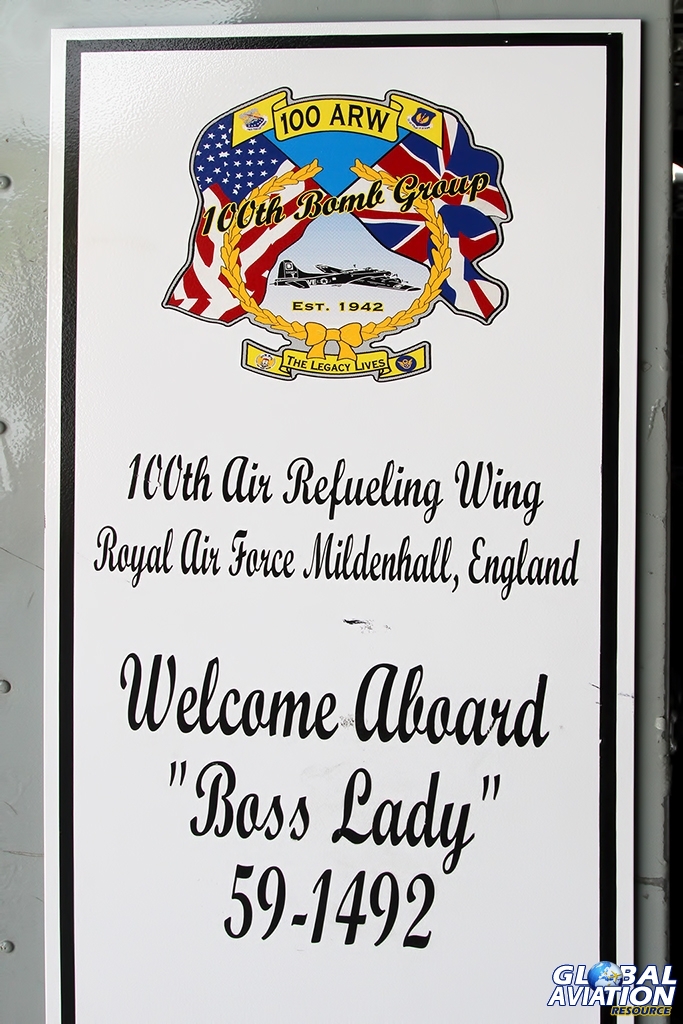
© Karl Drage – www.globalaviationresource.com
I asked Capt. Bourke if there was anything specific that the flight deck needed to be aware of when refuelling the larger types:
“With heavy aircraft, it’s going to push us around a little bit more, so you’ve just got to be conscious of that. Our aircraft will be trimming a lot more, we can feel them coming in behind us, and usually we’ll limit our angle of bank with the heavies more than we will with the fighters – so we might go to around 15 degrees angle of bank with the heavies. But the ‘135 was made for the B-52, during the SAC (Strategic Air Command) days, during the Cold War, so we really don’t have a whole lot of limitations – systems limitations – because it’s what we were made for; what we were meant to do.”

© Karl Drage – www.globalaviationresource.com
Karl Drage extends sincere thanks to the 100th ARW, in particular the crew of QID70, SSgt. Krystie Martinez and SrA. Christine Griffiths of the 100th ARW Public Affairs department, and Darron Hall.



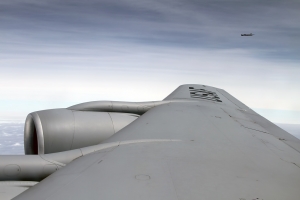
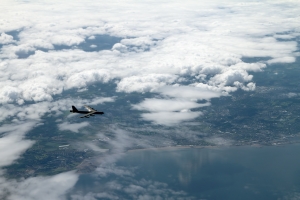


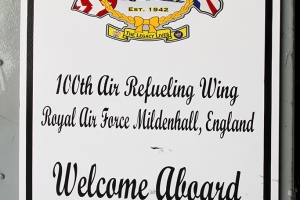
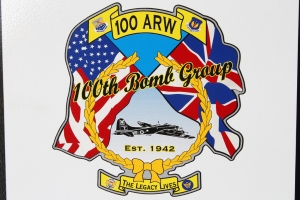


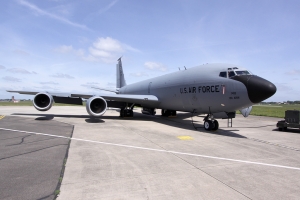

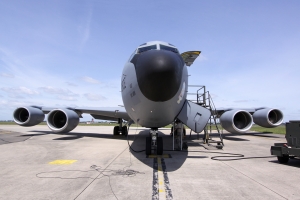
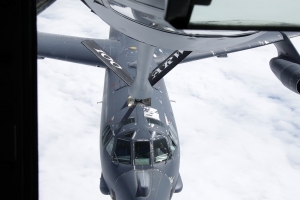
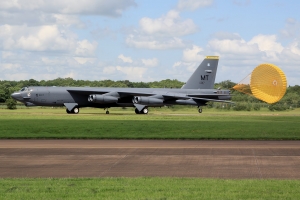
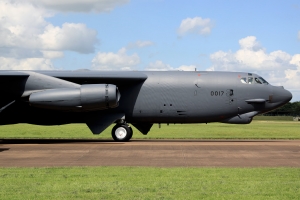

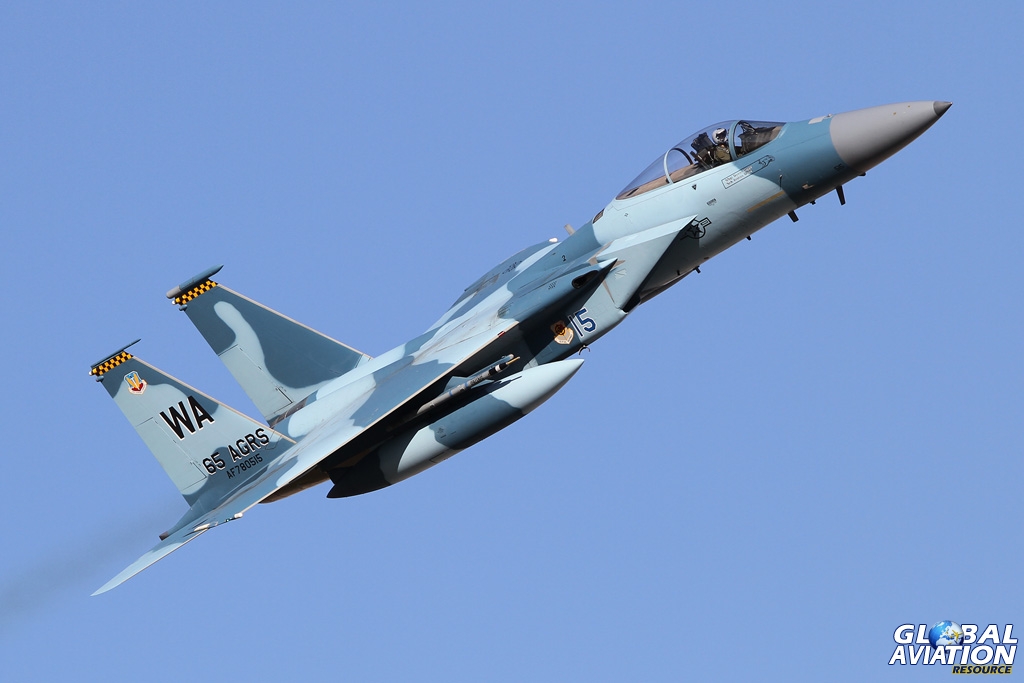


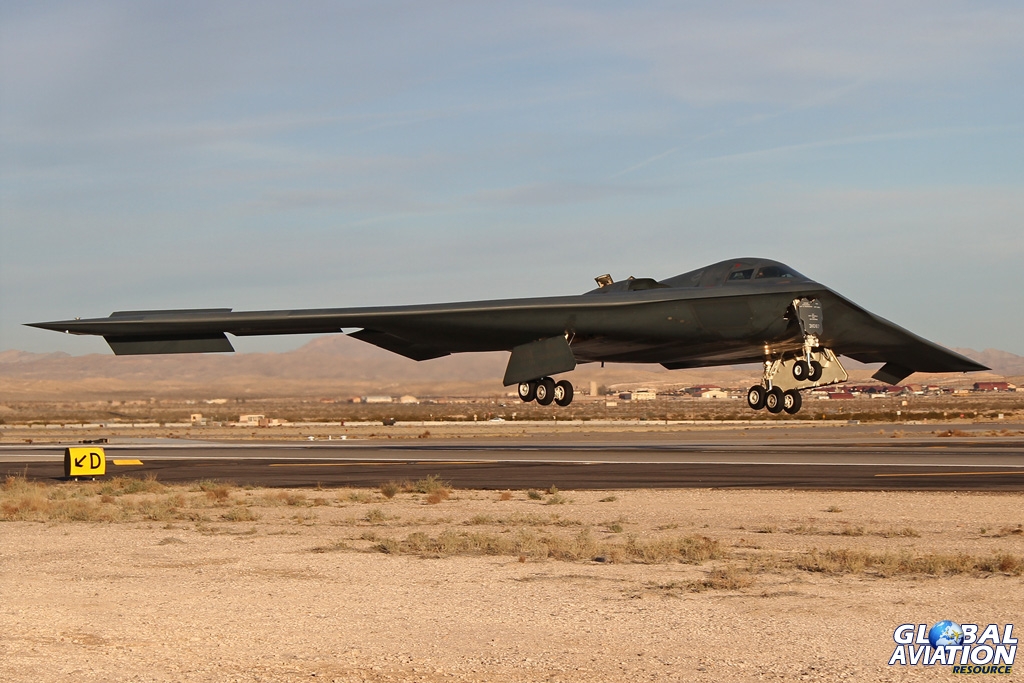
Outstanding article, both written and photographs. I love reading the GAR articles.